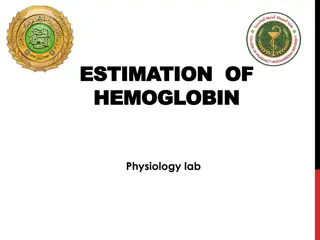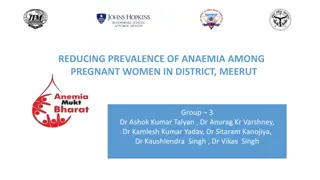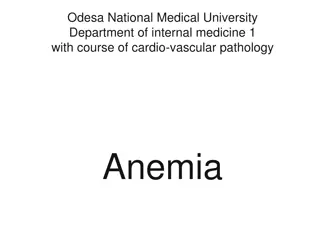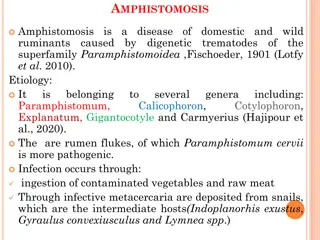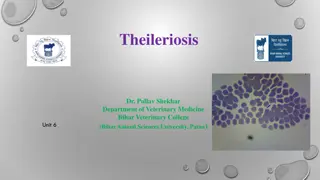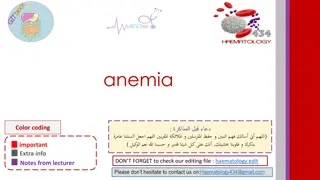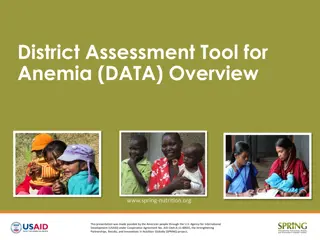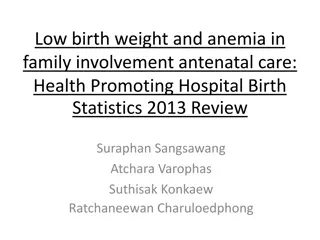symptoms of Anemia
symptoms of Anemia.pptx by Dr pawan kumar
Download Presentation

Please find below an Image/Link to download the presentation.
The content on the website is provided AS IS for your information and personal use only. It may not be sold, licensed, or shared on other websites without obtaining consent from the author.If you encounter any issues during the download, it is possible that the publisher has removed the file from their server.
You are allowed to download the files provided on this website for personal or commercial use, subject to the condition that they are used lawfully. All files are the property of their respective owners.
The content on the website is provided AS IS for your information and personal use only. It may not be sold, licensed, or shared on other websites without obtaining consent from the author.
E N D
Presentation Transcript
SYMPTOMS OF ANEMIA HTTPS://BESTBMT.COM/ Presentation Made by Reallygreatsite
CHEST PAIN In anemia, chest pain can occur due to increased strain on the heart to compensate for decreased oxygen- carrying capacity of the blood, leading to higher cardiac output. This increased workload can result in chest pain, especially during physical activity. Additionally, anemia can cause reduced oxygen delivery to the heart muscle, resulting in angina, a condition characterized by chest pain or discomfort. It's important to seek medical attention for chest pain, as it can indicate underlying heart conditions or severe anemia.
DIZZINESS. Dizziness in anemia can occur due to reduced oxygen supply to the brain. Anemia leads to a decreased number of red blood cells, which are responsible for carrying oxygen throughout the body. When there is insufficient oxygen reaching the brain, it can result in dizziness, lightheadedness, and a feeling of being unsteady. This symptom is particularly common when anemia is severe or develops rapidly. It's important to address anemia and its underlying causes to prevent complications and improve overall health.
HEART PALPITATIONS Heart palpitations, or a rapid or irregular heartbeat, can occur in anemia due to the body's attempt to compensate for decreased oxygen levels in the blood. Anemia reduces the number of red blood cells available to carry oxygen, leading to increased heart rate and cardiac output to try to deliver more oxygen to tissues. This increased heart activity can cause palpitations, which may feel like a fluttering, racing, or pounding sensation in the chest. It's important to consult a healthcare provider for evaluation and management if experiencing heart palpitations, especially in the context of anemia.
PULSATILE TINNITUS. Pulsatile tinnitus, a rhythmic sound in the ears that matches the heartbeat, can occur in anemia due to changes in blood flow. Anemia reduces the oxygen- carrying capacity of the blood, leading to increased blood flow to certain tissues to compensate for the lack of oxygen. This increased blood flow, especially in the vessels near the ear, can result in pulsatile tinnitus. It's important to consult a healthcare provider for proper diagnosis and management of both the anemia and the tinnitus.
HEADACHE. Headaches can occur in anemia due to reduced oxygen delivery to the brain. Anemia results in a decreased number of red blood cells, which are responsible for carrying oxygen to tissues. When the brain doesn't receive enough oxygen, it can lead to headaches. These headaches may vary in intensity and can be accompanied by other symptoms such as dizziness or fatigue. Managing the underlying anemia through proper diagnosis and treatment can help alleviate headaches associated with this condition.
THANKYOU For your consent on this matter https://bestbmt.com/


